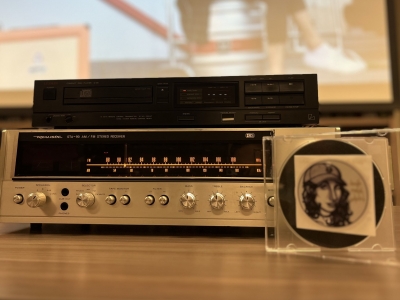By Mary Giles
The need for connection, engagement and reassurance from reliable multimedia sources is vital, especially during uncertain times.
Students in the Bachelor of Media Production and Design (BMPD) learn to create impactful digital stories through text, data, graphs, maps, photographs, audio and video that contribute to a more informed and involved society.
“This program differs from other digital media programs in Canada,” says BMPD program director Vicky McArthur. “Digital storytelling tools are taught through a fact-based storytelling lens.
“Students learn the importance of mobilizing interactive digital technologies to support inclusive narrative design. The program is strongly rooted in theories of communication and immersive storytelling, with a focus on opportunities to promote social justice and support communities that have traditionally been marginalized by mainstream media.”
The program is interdisciplinary. The 12 core courses include web development, programming, data visualization and media law. Students can also take eight elective credits from other areas of study including computer programming, journalism, creative writing, architecture or statistics. BMPD students can also minor in another area, often choosing film or entrepreneurship.
Multidisciplinary Faculty

Vicky McArthur
McArthur joined the program in 2018, its inaugural year. She has a background in music, web design, gaming, computer science and immersive technologies. She has won awards in the Ontario Japanese Speech Contest and spent a year in Japan on a scholarship from the Japanese government. She received her PhD in communication and culture, minoring in human-computer interaction (HCI). She is currently the director for the INCLUDE lab at Carleton, a research lab that studies inclusive design in HCI.

Katie Graham
Katie Graham began teaching in the program in 2019. She is currently completing her PhD in architecture. She is an associate faculty member in Carleton’s Immersive Media Studio (CIMS), a lab focusing on advanced digital technologies and hybrid forms of representation. Graham has experience creating virtual reality (VR) and virtual tours using panoramic photographs and photogrammetry, which uses multiple photographs of an object to create an accurate 3D model.
In 2020, Stéfy McKnight joined the team. She has a background in cultural studies, performance, online curation and experimental images. Her research examines surveillance and policing as contemporary forms of colonialism in Canada. She also uses YouTube, websites and social media to explore queer narratives in interconnected social networks, also known as fandoms.
Online Teaching in the Pandemic
“Teaching during the pandemic has been an adventure,” says Graham. “I modified how I delivered the material to best fit online courses. I broke down my classes into smaller, bite-size videos with activities to mix up the rhythm. I chose a mainly asynchronous approach to accommodate different time zones and students’ ability to access the internet.
“Each class has a weekly discussion group. I use BigBlueButton’s whiteboard function so students can draw throughout our discussions. The drawings are a great way to keep the class engaged and the conversation friendly.”

Big Blue Button whiteboard
For the Fall 2020 and Winter 2021 semesters, Graham received funding from the Students as Partners Program, through Teaching and Learning Services’ Discovery Centre, for her courses on Basics of Visual Communication.
“I was able to hire two upper-year students to create videos, from development to recording and editing, to be used as lecture materials for course content,” she says. For the fall semester, BMPD student Joe Creech created three spotlight videos including interviews with graphic designers and a look at visual communication during the pandemic.
For the winter semester, BMPD student Tife Bode created nine tutorial videos for the software Adobe Premiere. The students in the course are following the tutorials to learn the software’s tools, as well as how to complete a 10 to 15 minute video from concept to final cut.
In the fall semester, McKnight taught Introduction to Storytelling – The Context, which covers the history and evolution of stories and the impact of words, sounds and images in the digital age. Through weekly video lectures and online conversations, students worked on infographics.
“Twine is an online, open-source platform used to create a nonlinear story,” says McKnight. “Students create maps with post-its, photos and fact-based storytelling. They also worked on a proposal project. It’s vital that students learn how to work step-by-step and think about a timeline, budget and all the materials necessary to create a final product.
“In class, I emphasize that students need to question whose voices and stories are told in the media. We discuss decolonizing media studies and who has access to different platforms and technologies. I encourage students to think about how their subjectivities, identities and privileges effect the way they tell stories.”
“In the first term of Civic Engagement and Public Institutions, we discuss what we commonly understand as civic engagement, but also emphasize barriers that are not as recognized,” she says. “The second term is purely creative. Students learn how to use Esri Story Maps, a software used by NGOs, nonprofits and governments. Students create podcasts and present a case study, documentary, website or social media campaign about demonstrations, civic issues or an historic overview of civic engagement.”

Vicky McArthur – Augmented Reality (AR) Class Cupcakes
“I notoriously brought muffins or donuts to our early morning workshop classes in Winter 2020,” says McArthur. “When we made the pivot to online, I made an augmented reality (AR) cupcake that students could download and view at home. Many students shared pictures of their AR cupcake during the live session of our final lecture.”
McArthur says BMPD students learn about prototyping in their first semester. By second semester, students are able to partner with organizations to create stories using AR, VR, games, podcasts and social media.
Research Projects with Visual Impact
In 2019, McArthur received the first NSERC Engage Grant in the Faculty of Public Affairs. The project leverages data analytics from IBM Watson technology to explore applications of mass-customization for wearable technologies, like fitness trackers.
She was also awarded a SSHRC Engage Grant to collaborate with the Canada Aviation and Space Museum to use AR to create interactive animations to teach youth about the International Space Station.
In 2020, she received a SSHRC Insight Development Grant to develop AR applications to support Japanese language education.
Through CIMS and a SSHRC Partnership Development grant, Graham is a co-applicant for the project NAC@50+ that is exploring how to redefine the meaning of a National Historic Site in the digital age through digital storytelling explored in an interactive database, website and immersive storytelling experience.

BMPD students Ethan Burger, Shirley Hu, Rachel Li, and Hudson Pu create an interactive website exploring the history of Jessie Oonark and her untitled tapestry.
The project uses the National Art Centre (NAC) as a case study. Students in the Visual Communication courses have the opportunity to collaborate on the project through the ART@NAC. “The project was originally a physical exhibition, but it was switched to an online platform during the pandemic,” says Graham.
“The digital storytelling exhibition produced in Winter 2020 explored different narratives for each NAC visual artwork from the materiality of the piece, the artist’s life and inspiration and the connection to the architecture of the NAC. In Fall 2020, students developed a series of graphic design elements such as a logo, tri-fold pamphlet and mobile story prototype. The winter term will end with the development of virtual museums.”
Parliament: The Virtual Experience is a collaborative project Graham led at CIMS, the Library of Parliament and the National Film Board. CIMS created the digital model that housed the narrative. The project won a Prix Gémeaux award in the category Meilleure expérience interactive: toutes catégories.

Parliament, A Virtual Experience – House of Commons – Photo from Library of Parliament-National Film Board of Canada
McKnight is involved in a project called PROTOHYVE, a Carleton hub for communication, building from the University Arts Association of Canada’s Research-Creation Caucus she founded in 2017. “Creative researchers can share ideas, insights and resources, ask questions about research ethics and come together to discuss our work,” she says.
With Julia Chan, an instructor and postdoctoral fellow in the Institute of Criminology and Criminal Justice, McKnight created Cam Hunters, a collaborative art/media performance and research-creation project. “Cam Hunters looks at the increasing presence of surveillance, in Airbnb, reality TV or those looking for ghosts or aliens,” she says. “Through performances, satirical videos and a podcast, we offer a rethinking of surveillance in daily life.”
In response to classes moving online during the pandemic, McKnight and Chan created a Statement on Declining Online Imaging and Recording for remote meetings, classes and social gatherings. The statement addresses issues of using online video cameras, which could be triggering or retraumatizing for victims and survivors of digital abuse.

Stéfy McKnight (aka Professor Lavender)
In another project, McKnight examines fandoms and questions the lack of queer representation in mainstream media. “Although the Pokémon franchise openly accepts and invites queerness, popular figures on social media and YouTube tend to be heteronormative, cis gendered, white males. As Professor Lavender, I open booster packs, reveal cards and share Pokémon queer facts.”
“We are a highly multidisciplinary team,” says McArthur. “We have very distinct, but complementary research areas and backgrounds. Our students learn to develop a more holistic approach to digital storytelling and to carve out their own interdisciplinary paths via electives, minors, co-ops and portfolio development. Students are able to apply their skillsets to the industries they are passionate about in an ever-evolving landscape.”
Friday, January 29, 2021 in General, Journalism News, Media Production News
Share: Twitter, Facebook



